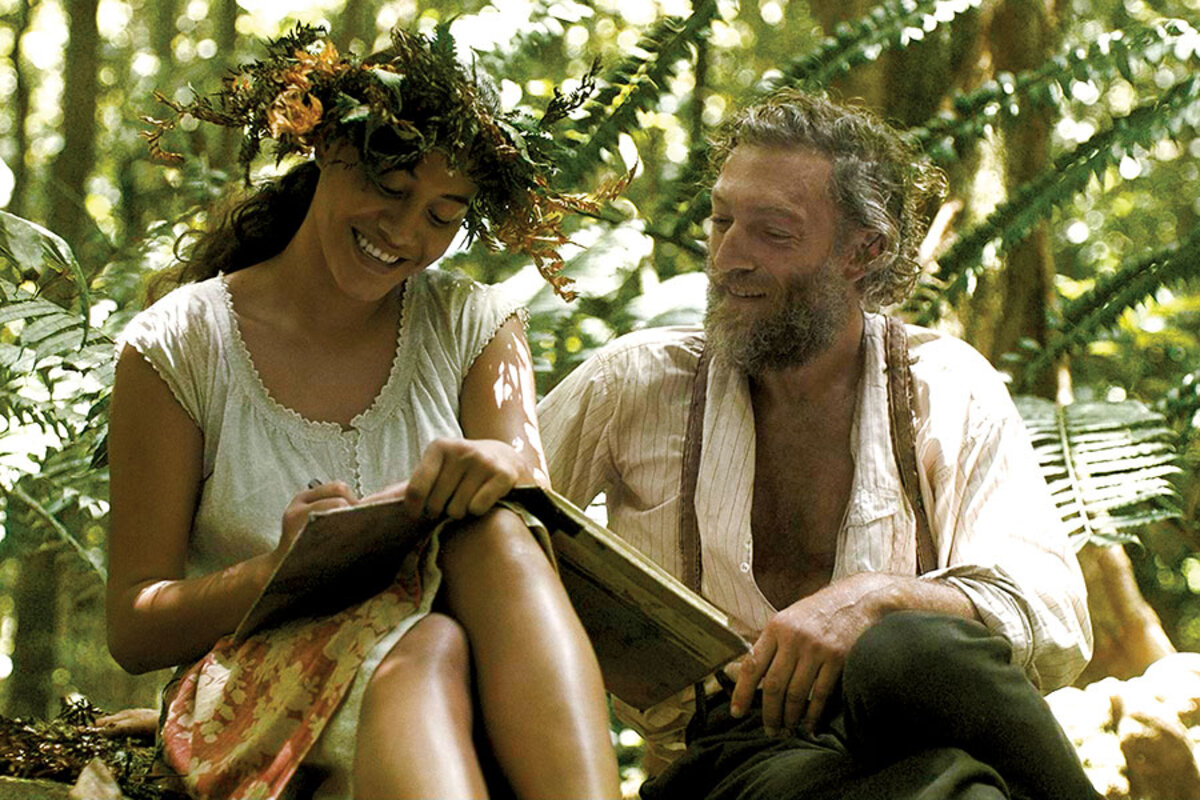'Gauguin: Voyage to Tahiti' chronicles Gauguin’s desire to see a new way
Loading...
The life of the French post-Impressionist painter and sculptor Paul Gauguin has been so mythologized in popular culture that his artistry, to an even greater extent perhaps than Vincent Van Gogh’s, has been overshadowed by his legend. “Gauguin: Voyage to Tahiti,” directed and co-written by Edouard Deluc and starring Vincent Cassel, draws on that legend while also subverting it. It’s a perplexing, fascinating, maddening movie, not quite like any other film biography of a famous painter, most of which tend to be equal parts ho-hum and hokum.
The basis of Gauguin’s legend was his decision to leave his wife and five children in 1891 and flee Paris for French Polynesia, where he hoped to rejuvenate his inspiration. This was greeted by his fellow artists as an act of heroism, but Deluc doesn’t soft-pedal the raging narcissism at its core. His departure takes a heavy toll on his family, and his grievance at finding “not a face ... worth painting” in Paris comes across like a thin excuse to go native.
At the same time, Deluc wants us to know that Gauguin was not simply some bohemian outlier. The movie cuts directly from Paris to a thatched hut in Tahiti where Gauguin is furiously painting, oblivious to the torrential downpour outside. Such is the power of Cassel’s performance that this sequence surmounts camp. The cliché of the mad artist is such a staple of this genre that what Deluc and Cassel are attempting to dramatize here – a fusing of the outlaw and the artist – can easily be undervalued. (It’s what Robert Altman achieved in his great Van Gogh movie, “Vincent & Theo.”) This is a movie about Gauguin that, in the end, is less about his artistry than his ravenous sensibility, his desire to break through to a new way of seeing. In the film’s terms, they are essentially the same thing.
Loosely based on Gauguin’s 1901 travel memoir “Noa Noa,” the movie doesn’t go in for a lot of painterly reproductions of Gauguin’s greatest hits. (One notable exception: the startling re-creation of his famous “Spirit of the Dead Watching.”) The bright, lush jungle greens that we see are not really present in Gauguin’s canvases, with their dark iridescences. The Tahiti of this movie, once Gauguin flees the French colonial outposts and ventures into the jungles, is both beckoning and forbidding. Still in his early 40s, Gauguin, with a scraggly beard and rheumy eyes, is already hobbled and ailing, so much so that a sympathetic local doctor (Malik Zidi) urges him to return to France. This suggestion, of course, only spurs him to remain.
He takes a willing bride, 17-year-old Tehura (Tuheï Adams), and she becomes his muse. This is potentially dangerous territory: the white colonial patriarch sexually exploiting the natives. (Plus in “Noa Noa,” Gauguin claimed Tehura was 13 when they married.) But I never got the feeling that Deluc was celebrating a colonialist wish-
fulfillment fantasy here. If anything, Gauguin comes across as a severed soul who, without the ministrations of the Tahitians, would rapidly have expired. Tehura is, in a sense, the true hero of this movie, not because she devotes herself to Gauguin (despite an erotic attachment to a local boy) but because she understands better than he does the animistic essence of things.
Tehura’s primitivism, like Gauguin’s, is more complicated than it initially appears. She is drawn to the ritualism of the Roman Catholic church services set up by the missionaries; she cherishes dressing up in white. Deluc could have staged these scenes as tragic examples of colonial appropriation, but he understands how Tehura might be attracted to such a communion.
If one is looking for a standard biopic about a famous artist, this movie is not that. Deluc is skimpy with the facts: You’d never know, for example, that Gauguin, before he became a full-time artist, was a successful stockbroker or that his time in French Polynesia (he left in 1893 and returned for good two years later, living there until he died in 1903) was not as abject as the film depicts. With his near-hallucinatory stylistics, Deluc creates a visual equivalent to Gauguin’s fervid temperament, but there were times when I lost sight altogether of Gauguin the artist. It’s the kind of approach that Werner Herzog might also have taken. Despite Cassel’s intensity, this often means Gauguin seems more like an agonized avatar than a person of flesh and blood.
The film is nothing less than honorable, though. When Gauguin proclaims early on that to “renew yourself, you have to go back to the source,” he might as well be speaking for Deluc, who, in attempting to mainline the wellsprings of Gauguin’s art, must surely have been seeking his own. Grade: B+ (This movie is not rated.)




